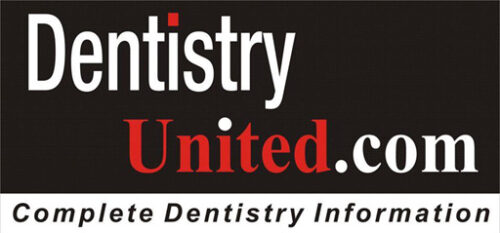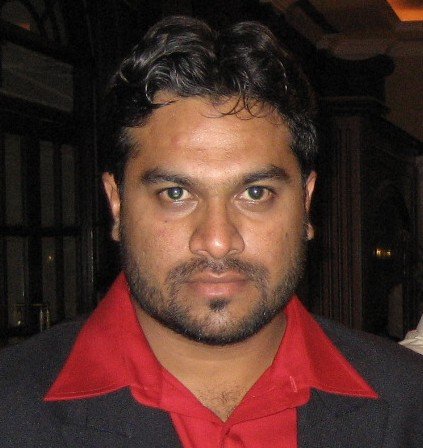A Journey Through Technological Evolution
The rhythmic hum of my 3D printer crafting a dental implant took me back to the 1980s, when my friend Mansoor gifted me an Epson dot matrix printer. That mechanical clatter marked the beginning of a revolution that would transform dentistry forever. Today, we’re not just printing models—we’re crafting titanium implants, multi-material restorations, and even bioactive scaffolds with living cells.
As Mansoor would say: “From perforated paper to living cells—what a time to be alive!”
Once Nabeel reaches his office, he sends a WhatsApp message to Mansoor with these details for him to check if all is fine about printers.
This guide dives deep into the printers driving this dental revolution, covering their types, classifications, and applications.
Section 1: The 3D Printing Spectrum in Dentistry
Plastic/Polymer Printers
| Technology | Resolution | Speed | Cost | Best Applications |
|---|---|---|---|---|
| FDM | 100-300μm | Slow | $300-$2,000 | Study models, trays |
| SLA | 25-50μm | Moderate | $2,500-$7,000 | Crowns, surgical guides |
| DLP | 35-50μm | Fast | $3,000-$10,000 | Aligners, full-arch models |
| LCD | 35-100μm | Fast | $500-$4,000 | Models, temporaries |
| PolyJet (MJ) | 16-30μm | Moderate | $10,000+ | Multi-material models |
| CLIP | 25-75μm | Very Fast | $50,000+ | High-speed aligners |
Clinical Insight: A $5,000–$7,000 DLP or SLA printer offers the best balance of precision and affordability for most practices. LCD printers are a budget-friendly alternative, while CLIP excels in speed for high-volume needs.
Metal and Powder-Based Printers
| Technology | Materials | Accuracy | Machine Cost | Best For |
|---|---|---|---|---|
| SLM | Ti-6Al-4V, CoCr | ±50μm | $250K-$1M | Permanent implants |
| DMLS | CoCr, Nickel-Chrome | ±100μm | $200K-$600K | RPD frameworks |
| EBM | Ti-6Al-4V | ±200μm | $700K+ | Large reconstructions |
| SLS | Nylon, Ti-alloys | ±100-200μm | $100K-$500K | Prototypes, guides |
| Binder Jetting | Metals, Ceramics | ±150μm | $50K-$300K | Cost-effective metal parts |
Metal Printers and Patient-Specific Implants
SLM (Selective Laser Melting)
- Why It’s Used for PSIs: SLM fully melts metal powders (e.g., titanium alloys like Ti-6Al-4V or cobalt-chrome) into dense, solid structures with high accuracy (±50μm). This allows for intricate, patient-specific designs, such as custom implant shapes or porous lattices that promote osseointegration.
- PSI Example: A custom mandibular implant designed from a patient’s CT scan, with tailored screw holes and contours.
DMLS (Direct Metal Laser Sintering)
- Why It’s Used for PSIs: Similar to SLM, DMLS sinters metal powders (e.g., CoCr, nickel-chrome) with slightly less melting, achieving ±100μm accuracy. It’s ideal for removable partial denture (RPD) frameworks or smaller custom implants where cost and speed are considerations.
- PSI Example: A personalized dental bridge framework matching a patient’s occlusion.
EBM (Electron Beam Melting)
- Why It’s Used for PSIs: EBM melts titanium powders in a vacuum using an electron beam (±200μm accuracy), excelling at large, complex reconstructions with porous structures for bone integration. Its ability to handle bigger builds makes it suitable for extensive jaw implants.
- PSI Example: A full maxillary reconstruction plate designed for a trauma patient.
Key Finding: Metal printers like SLM and DMLS enable intricate implant designs, but their high costs make outsourcing to labs more practical for most clinics. Binder Jetting provides a cheaper metal option with post-processing trade-offs.
Section 2: Classification of Dental 3D Printers
Here’s how these printers are categorized based on their operating principles:
- Vat Polymerization: SLA, DLP, LCD, and CLIP cure liquid resins with light. These dominate dentistry for their precision (16–100μm) and biocompatible material options.
- Material Extrusion: FDM extrudes thermoplastics, offering affordability but lower resolution (100–300μm), limiting it to non-clinical uses.
- Powder Bed Fusion: SLS, SLM, DMLS, and EBM fuse powders (plastic or metal) with lasers or electron beams. Ideal for durable implants and prototypes.
- Material Jetting: PolyJet (MJ) jets and cures photopolymers, excelling in multi-material and aesthetic applications.
- Binder Jetting: Binds metal or ceramic powders with a liquid agent, requiring sintering; a cost-effective metal alternative.
- Bioprinting: A subset of material extrusion/jetting, using bioinks for living constructs, currently in research phases.
Section 3: Global Printer Comparison
Chinese vs. Korean vs. Western Options
| Category | Chinese (Creality, Shining 3D) | Korean (Dentis, DIO) | Western (Formlabs, SprintRay) |
|---|---|---|---|
| Budget | $1,500-$4,000 | $4,000-$7,000 | $3,500-$10,000 |
| Precision | 35-75μm | 30-50μm | 25-50μm |
| Support | Limited overseas | Good in Asia | Global networks |
| Best For | Startups, educational use | Mid-sized Asian clinics | High-end Western practices |
Pro Tip: Korean printers balance cost and quality for Asian markets, while Western brands lead in reliability and material ecosystems. Chinese LCD options (e.g., Anycubic Photon) are perfect for budget-conscious beginners.
Section 4: Printed vs. Milled Implants Including Patient Specific Implants
| Factor | 3D Printed | CAD/CAM Milled |
|---|---|---|
| Design Freedom | ★★★★★ (complex lattices) | ★★☆ (toolpath limits) |
| Surface Finish | ★★☆ (needs polishing) | ★★★★★ (mirror smooth) |
| Osseointegration | ★★★★☆ (porosity helps) | ★★★☆☆ (requires coating) |
| Production Cost | $200-500 | $300-700 |
| Lead Time | 4-8 hours | 1-2 hours |
Clinical Verdict: Printed implants (SLM/DMLS) shine for complex, porous designs; milled implants excel in standard cases needing polished finishes.
Final Wisdom
As I told Mansoor during our last call: “The best technology isn’t what’s most impressive—it’s what solves real clinical problems.” Whether you’re printing a simple model or a titanium implant, remember:
- Start Small: Begin with resin printers (SLA/DLP) before exploring metal.
- Outsource Strategically: Use labs for SLM/EBM or bioprinting needs.
- Focus on Purpose: Pick tools that enhance patient care, not just tech cred.
The dot matrix printer of my youth has evolved into machines crafting smiles at the cellular level. Technology serves biology—choose printers that make you a better clinician, not just a high-tech one.
Conclusion
From FDM’s humble trays to bioprinting’s living scaffolds, 3D printing in dentistry spans a vast technological landscape. Each printer type—classified by its core mechanism—offers unique strengths, from SLA’s precision to SLM’s permanence. Costs range from $300 to over $1M, but the real value lies in matching the tool to the task. The future? Cheaper machines, smarter materials, and perhaps a day when bioprinting gives us living teeth.
Choosing the Right 3D Printer for Dentistry
When selecting a 3D printer, consider the following factors:
- Application: Aligners and models require SLA/DLP, while implants need SLM/DMLS.
- Accuracy: SLA and DLP offer high precision for dental restorations.
- Material Compatibility: Ensure biocompatible resins or metals match your use case.
- Budget: LCD printers offer affordability, while SLM is a high-end investment.
- Production Speed: CLIP is best for mass production, while SLS balances speed and material choices.
- Post-Processing: Some printers require extensive curing, sintering, or polishing.
With these insights, dentists and labs can make informed choices for high-quality, cost-effective 3D printing in their practice.
Dr. Syed Nabeel, BDS, D.Orth, MFD RCS (Ireland), MFDS RCPS (Glasgow)
Dr. Syed Nabeel is a dedicated dental professional with a passion for advancing education, patient care, and innovation in dentistry. As the Founder and CEO of DentistryUnited.com, a platform established in 2004, he has worked tirelessly to create a global space for knowledge-sharing among dental professionals. His commitment to academic excellence led to the launch of Dental Follicle – The E-Journal of Dentistry (ISSN 2230-9489) in 2006, providing a platform for scholarly exchange and contemporary discussions in the field.
As the Managing Director of Smile Maker Clinics Pvt Ltd, Dr. Nabeel leads a growing network of clinics in South India, where patient-centered care meets innovation. His clinical expertise focuses on Neuromuscular Dentistry, Full-Mouth Rehabilitation, and Smile Makeovers, helping patients regain function and confidence through personalized treatment approaches. He is also a firm believer in evidence-based dentistry, with his in-house research team actively contributing to dental literature—an uncommon yet vital initiative in private practice.
With over two decades of experience, Dr. Nabeel has developed a keen interest in occlusal dynamics and temporomandibular joint (TMJ) disorders, ensuring that his treatments prioritize long-term comfort and stability. His curiosity and openness to emerging technologies have led him to explore digital dentistry and artificial intelligence (AI), continually seeking ways to enhance diagnostics, treatment planning, and patient experience.
Beyond clinical practice, Dr. Nabeel enjoys teaching and mentoring fellow professionals, particularly in neuromuscular dentistry and practice management. His lectures focus on workflow optimization, patient engagement strategies, and integrating modern technology into dental practices, offering practical insights that empower others to refine their approach to patient care.
Outside of dentistry, he finds joy in wildlife photography, travel, gardening, and creative thinking—interests that reflect his deep appreciation for learning and the world around him. While his journey has been shaped by dedication and perseverance, he remains grateful for the mentors, colleagues, and patients who continue to inspire him.
For professional inquiries, Dr. Nabeel can be reached at dentistryunited@gmail.com
.

